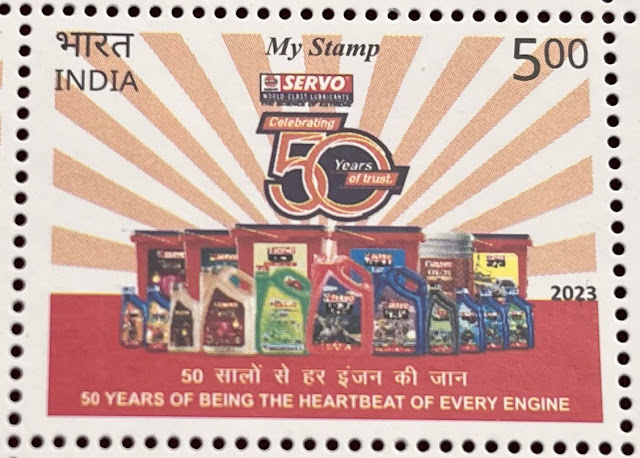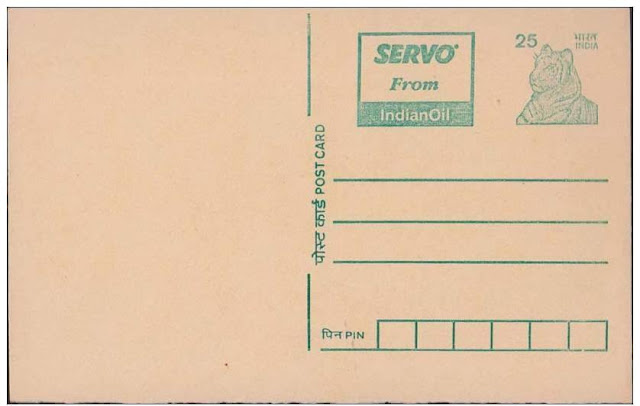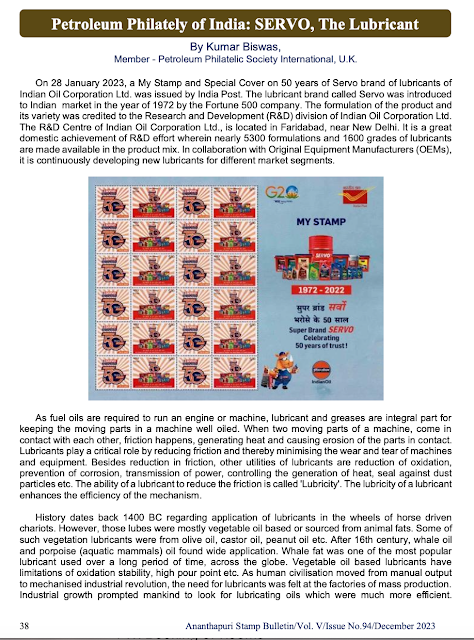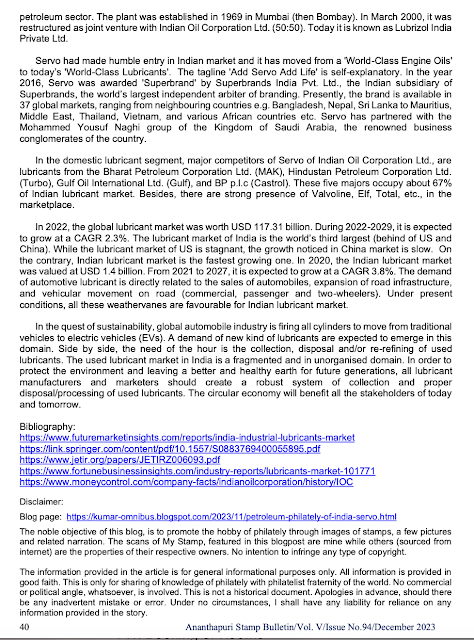 |
| Source: Internet |
- 'Give me back that postage stamp or accept this termination letter for your job!'
Something like this might have happened related to a particular postage stamp. The order was given by none other than C.I.A. (Central Intelligence Agency) of USA, the civilian foreign intelligence service of the federal government of the United States, to a few of its own employees. Subsequently, the stamp became famous as 'CIA invert'. Otherwise, it had nothing to do with the activities of C.I.A. to commemorate. It was a definitive stamp and was purely related to philately.
 |
| Normal rush lamp stamp (Source: Internet) |
On 02 July, 1979, the United States Postal Service (USPS) issued a postage stamp (Scott 1610) of face value $1, depicting a candle holder with burning candle (rush lamp), under Americana series. “America’s Light Fueled By Truth and Reason” was written on the stamp. The issue of definitive postage stamps of USPS, under Americana series, was in place from 1975 to 1981. The Americana Series superseded the Prominent Americans series, and was in turn superseded by the Great Americans series and the Transportation coils.
 |
| First Day Cover with normal stamp (Source: Internet) |
One day, C.I.A. sent one Steve Lambert, its employee to the post office in McLean, Virginia to buy a few postage stamps for official purposes. He went to the post office and purchased a partial sheet having 95 number of $1 stamp and returned to the office. A few days later, another employee of C.I.A. found that there were a few errors in those stamps. There was a mis-match in the direction between the flame of the burning candle and the candle holder or rather they are opposite to each other. Similarly, with respect to the flame, the writings were too inverted. He made a brilliant discovery (in the year 1985).
 |
| CIA Invert (Source: Internet) |
Subsequently, Steve shared this information confidentially with a close group of his colleague, comprising seven male and two female C.I.A employees (total nine).
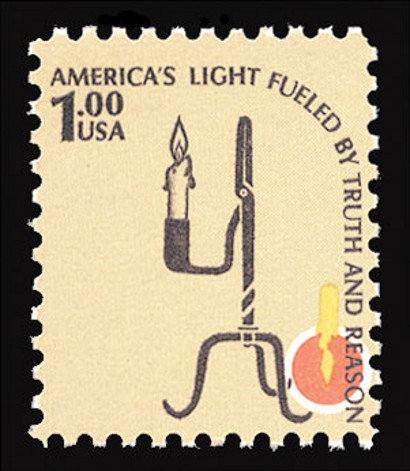 |
| CIA Invert (Source: Internet) |
It was a single pane of $1 candle-stand stamps. But out of one hundred stamps of the pane, five were already sold off before by the post office person to some other unknown customers. So, the pane or the sheet was having ninety-five stamps in it - all with identical error. The selvedge part of the pane which carried the plate number was missing. They smelt the financial potential of this finding.
 |
| Both versions together (Source: Internet) |
The group of nine C.I.A. employees began making strategy to capitalise the new found treasure. They discussed among themselves and finally came out with the idea that at first they would replace the error pane with normal stamps by purchasing from the post office. Once they replace the errors with valid ones, they would divide the booty among themselves. According to the plan, under the secret operation within C.I.A. office, they pooled the total amount, purchased ninety-five number of normal stamps and substituted them in the office for error stamps. By giving normal candle-stamps to the office, those error stamps came under their possession, which later became famous as ‘CIA Invert’ (Scott 1610c). Each one of them kept one stamp and decided to dispose of the balance (95-9 = 86 stamps) for profit to an auctioneer. They contacted Ike Snyder, the stamp dealer from Annandale, Virginia. Snyder, in turn, suggested them to contact Jacques C. Schiff, Jr., the error stamp dealer of New Jersey. When contacted, Schiff asked them to meet him as quickly as possible. Even he was ready to reimburse the airfare for travel.
 |
| An advertisement (Source: Internet) |
On 02 April, 1986, one person on behalf of the group, visited the office of Schiff at Ridgefield, New Jersey. The C.I.A. person wanted $100,000 for the part pane with 85 intact and one damaged stamps. Schiff, being a cunning businessman gave a counter offer of meagre $25,000. A tough bargain followed between two sides. In spite of the best effort by the group side, the dealer didn’t budge from his initial offer of $25,000. Reluctantly, the representative of the group agreed for the offered amount, conditionally. Schiff agreed to the condition that come what may, the identity of the sellers would not be disclosed to anyone. He issued nine cheques, each for an amount of $2,777.78 for the purchase of the partial pane of 85 intact mint stamps ($2,777.78 X 9 = $25,000). One damaged stamp (86th one) was given to him as complimentary.
 |
| De-classified C.I.A. document (Source: Internet) |
Such news could not be kept secret for longer time and somehow it reached the media houses. What subsequently followed was media blitzkrieg through print and audio-visual network (newspapers - The New York Times and CBS news, tv channels etc.).
 |
| The first pane (Courtesy: Linns.com) |
Fred Boughner first brought the CIA Invert story to general public through Linn’s Stamp News (issue 11 August, 1986). In the story, it was reported that those stamps were bought by a small business in Fairfax, Virginia. Subsequently, Don Sundman, president of Mystic Stamp Co., filed a Freedom of Information Act request with the Bureau of Engraving and Printing. The printing agency revealed the involvement of C.I.A. The Bureau of Engraving and Printing had launched an investigation. It had concluded that this was a genuine error which had slipped all checkpoints prevailing at that point of time.
The office of C.I.A. was alerted about CIA Invert which was a big sensation by that time. The agency started their own internal ethics investigation and all nine employees involved in the matter were identified. The office contented that those stamps were purchased with government fund and hence they are properties of the state. They are liable for punishment for using government’s property for personal gain – a gross misconduct. Those employees were ordered to return those stamps from their possession or face imprisonment of ten years and a fine of $ 10,000.
Four employees (including two ladies) returned their CIA Invert to the office and retained their jobs and the one who claimed that his precious stamp has been lost, continued in the service. On 01 November 1990, C.I.A. donated the recovered CIA Inverts (four in number) to Smithsonian National Postal Museum. Balance four employees (including Lambert), who refused to return their ‘jewels’ were terminated from the job by C.I.A. Nearly twenty years later, the former C.I.A. person who had claimed that his stamp was lost, approached Mystic Stamp Company to sell the ‘lost’ stamp.
At Smithsonian National Postal Museum, one CIA Invert was placed for display which was donated by Don Sundman, the President of Mystic Stamp Company. These $1 stamps of Americana Series were printed in sheets of 400. Therefore, beside this discovered partial pane of 86 stamps, three more panes each of 100 stamps must have been printed.
 |
| A block of four (Source: Internet) |
As per the latest information available, in year 2004, one block of four CIA Invert was sold for $60,000 and another block was sold for $71,875 in 2015. It is said that only three such block exists with the collectors.
 |
| With plate ID (Source: Internet) |
A new block of four CIA Invert, with intaglio plate number 40971 have appeared on the internet. In all probabilities, it was from the second pane. According to plate number, it was printed between 04 November - 05 December 1985.
However, pane number three and four have vanished in thin air without leaving any clue about their whereabouts. Their existence or destruction has been left to the imagination of the philatelists. May be someday in future, some of them may surface from the closet of some unknown collector.
Webliography:
https://www.stampcommunity.org/topic.asp?TOPIC_ID=84105
https://www.linns.com/news/us-stamps-postal-history/cia-invert-revisited-how-did-it-occur
https://www.cia.gov/readingroom/docs/DOC_0001057538.pdf
https://info.mysticstamp.com/learn/cia-inverts/
https://www.linns.com/news/us-stamps-postal-history/stamps-from-second-cia-invert-pane-found
Disclaimer:
The noble objective of this blog, is to promote the hobby of philately through images of stamps, a few pictures and related narration. The scans of a few stamps, featured in this blogpost are mine while others (sourced from internet) are properties of their respective owners. No intention to infringe any type of copyright.
The information provided in the article is for general informational purposes only. All information is provided in good faith. This is only for sharing of knowledge of philately with philatelist fraternity of the world. No commercial or political angle, whatsoever, is involved. This is not a historical document. Apologies in advance, should there be any inadvertent error. Under no circumstances, I shall have any liability for reliance on any information provided in the story.
*************
 |
| The cover page |
 |
| The index |
 |
| Page 1 of 3 |
 |
| Page 2 of 3 |
 |
| Page 3 of 3 |




